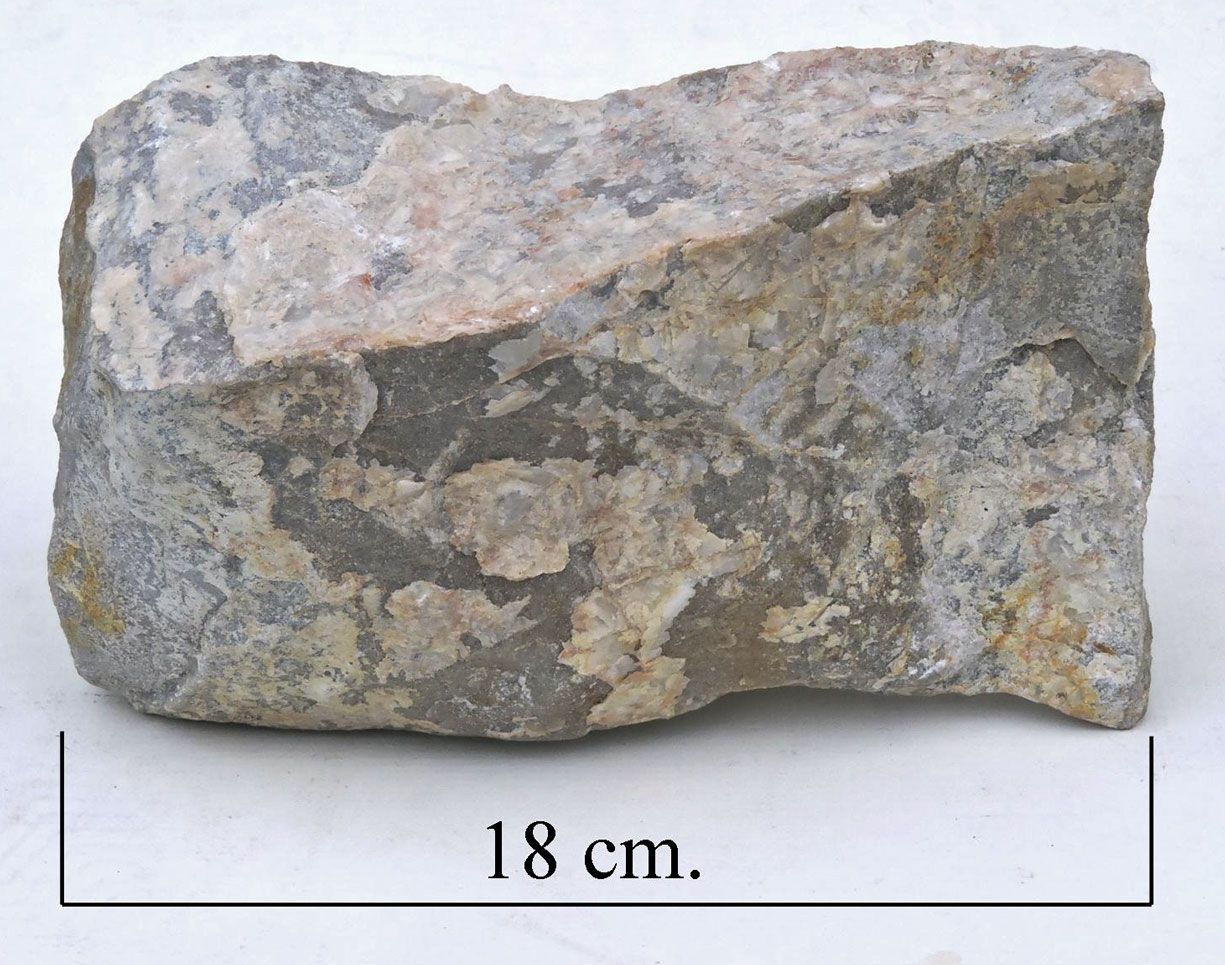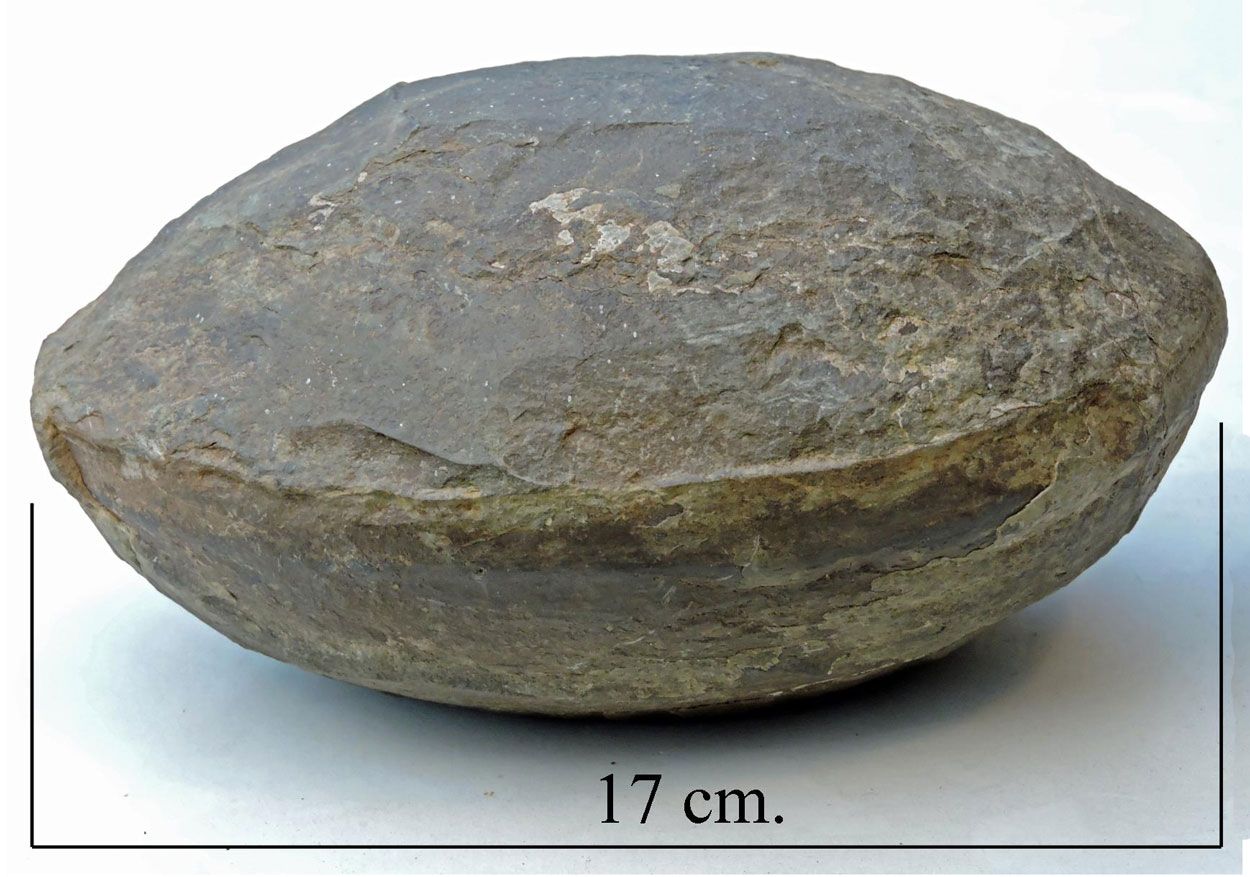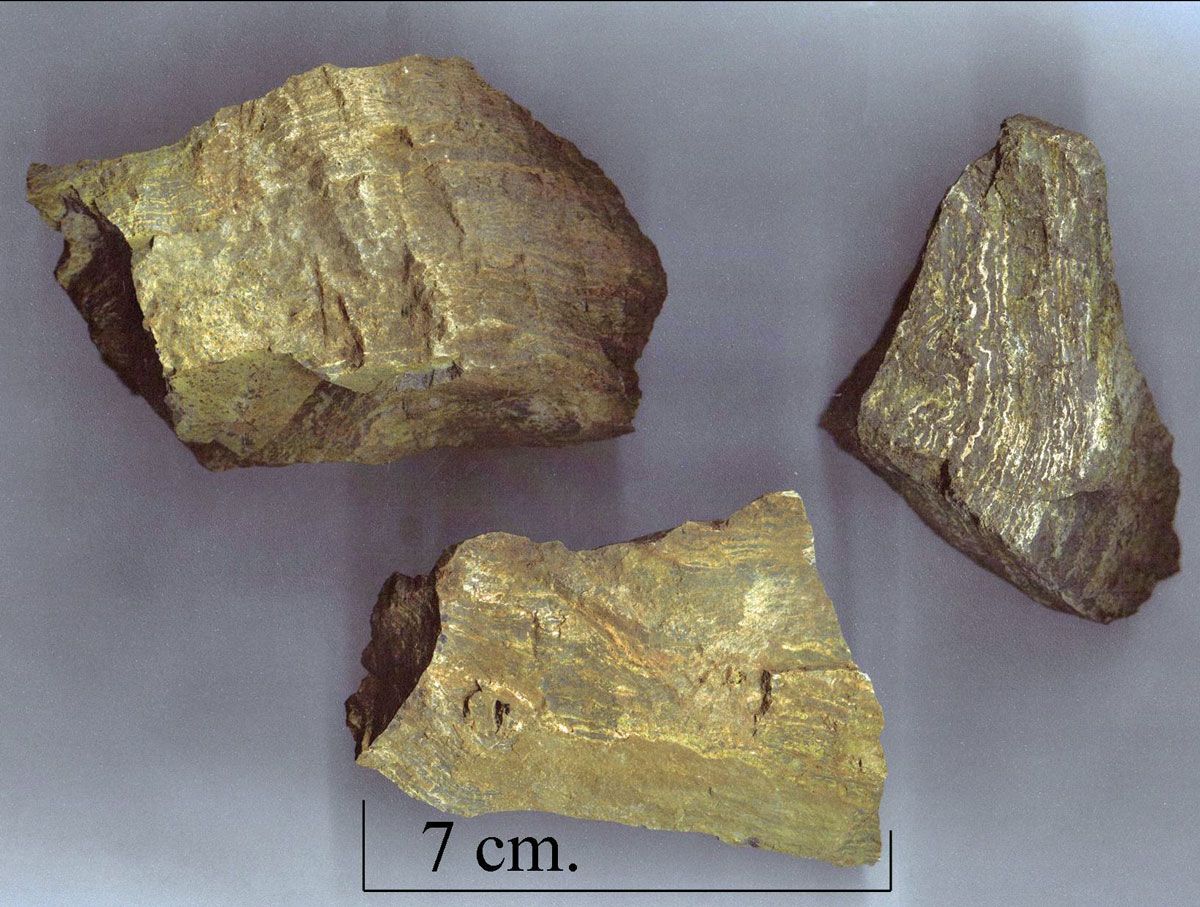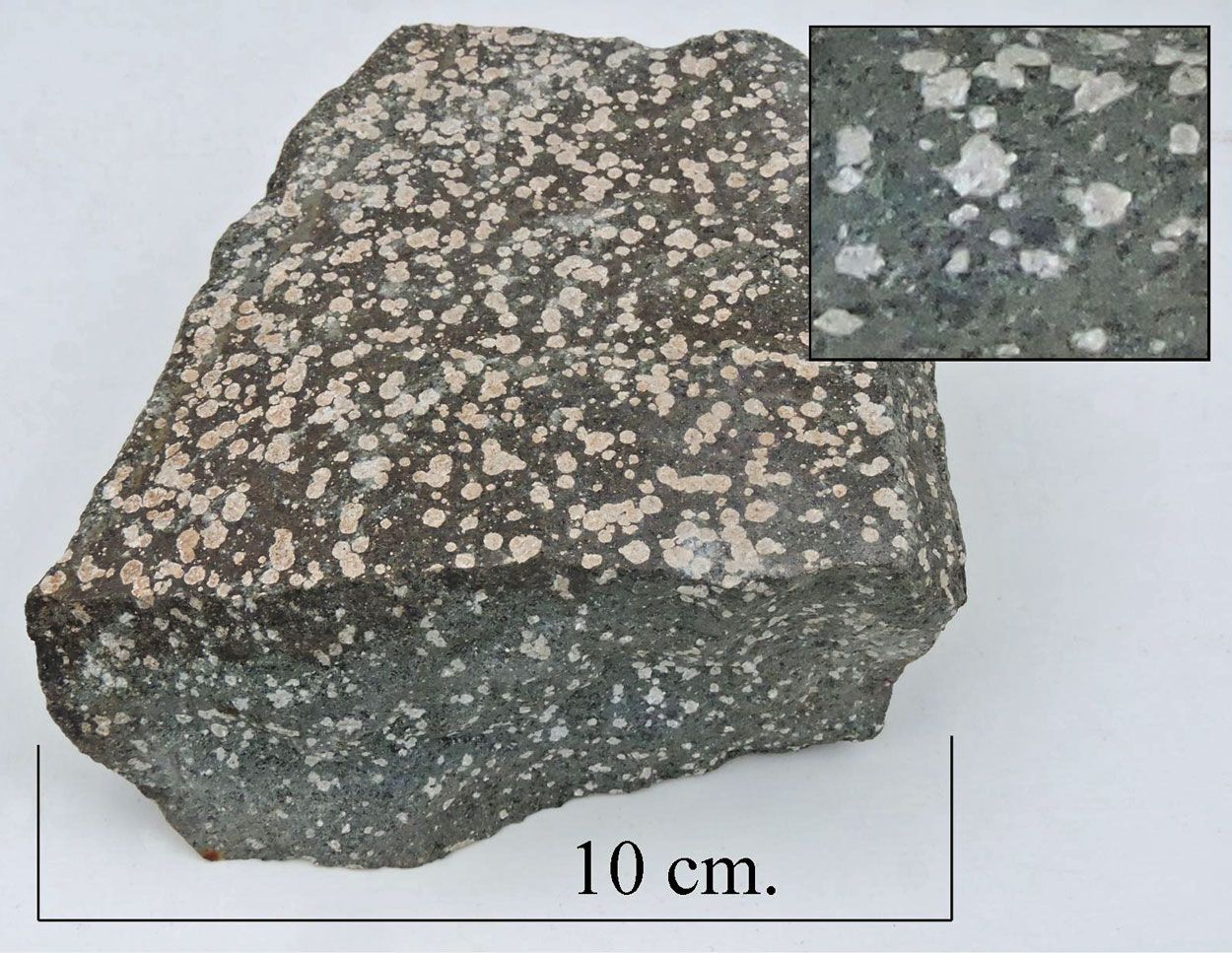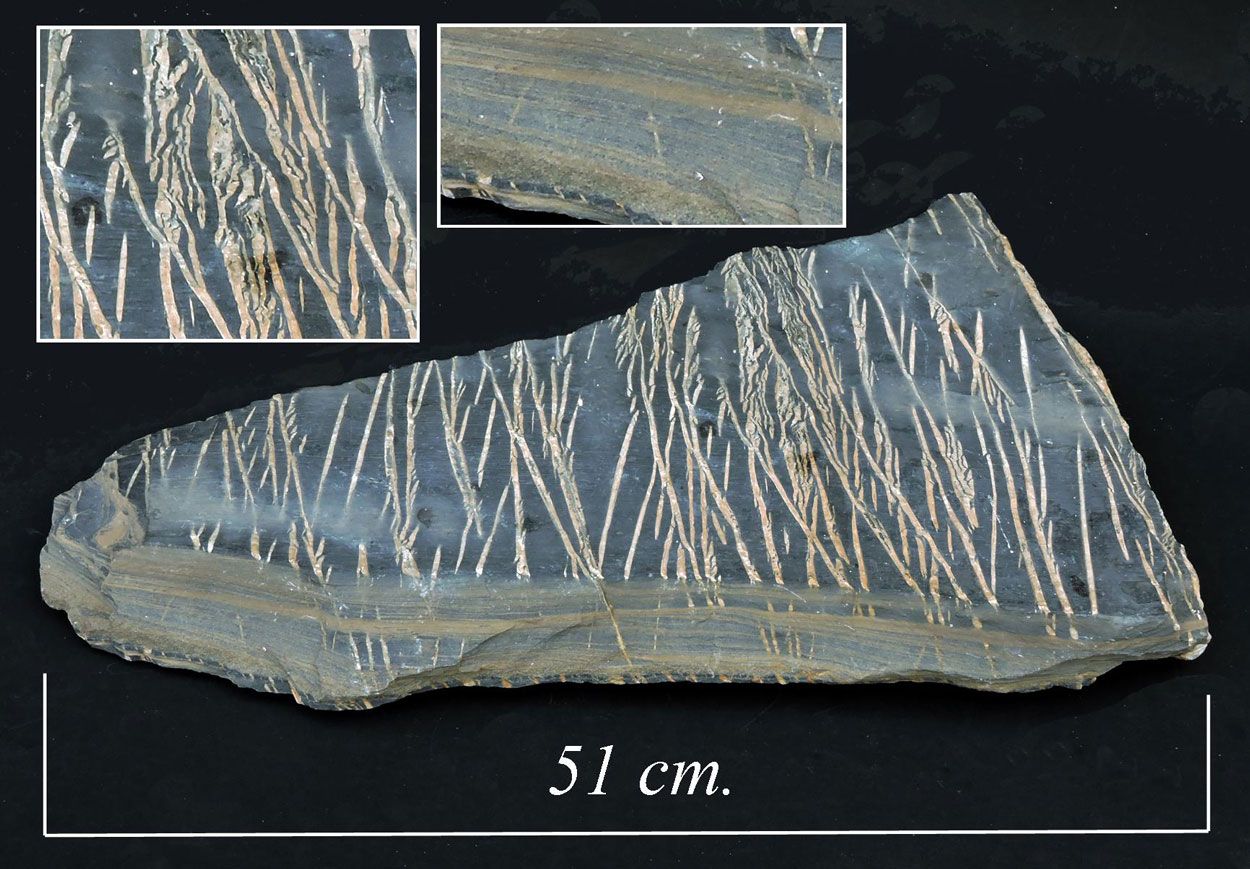
Flysch. Swiss Alps.
This specimen was a gift from Bill Fitches who collected it from the Salanfe valley in the Martigny area near the Swiss-France border in the Swiss alps. His description of the specimen is as follows. The Flysch is a suite of marine sedimentary rocks of Eocene age, which was deposited in the Tethyan ocean between the African and European continents just before they collided to create the Western Alp mountain chain. They are low energy turbidites composed of thinly bedded mudstone and siltstone. The sample has many veinlets of light coloured carbonate , probably calcite, which cut the bedding at right angles. They were produced during the plate collision and the rise of the Alps. The sample was squashed perpendicular to the bedding planes, and strongly extended along the bedding. This deformation caused lots of cracks which filled with carbonate segregating from the host rock to make the arrays of veins. The veins are in several directions, implying that the direction of extension changed during the deformation history.
